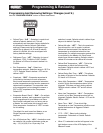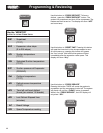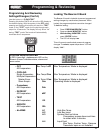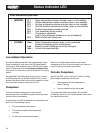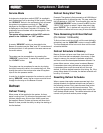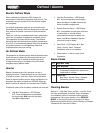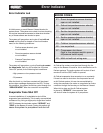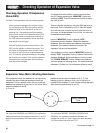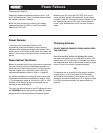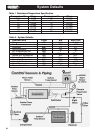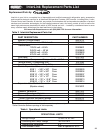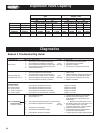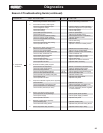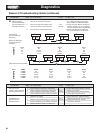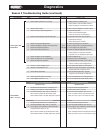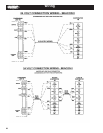
21
PowerFailures
In the event of a power failure Beacon II will
automatically close the expansion valve to prevent
refrigerant from migrating throughout the system. After
power returns, with 24 VAC at the board, the system will
restart in the cooling mode after the four-minute hold off
period.
SpareSensorTerminals
Beacon II provides a set of input terminals for customers
who may want to monitor an additional temperature or
items such as Product Temperature. This input terminal
requires a signal from a thermistor which meets the
temperature/resistance values in Table 1 on page 22.
If a product temperature simulator is used it must meet
the resistance/temperature specication listed in Table
1. The temperature range for this input is –30°F to 140°F.
Sensors on the Beacon system, as supplied, will not
simulate product temperature.
This input can be monitored on the LED display by using
the “MONITOR” button and scrolling to SPt. The values
displayed will be the temperature of the spare sensor.
PowerFailures
Measuring resistance between locations A and C or B
and D will always show “Open” because these locations
are between the motor windings.
When the valve is opening or closing, the voltage
measured between A and B or C and D should be
between 20 to 22 VAC.
Continued from Page 20
Measuring the DC volt of the EXV TEST pins, on the
board, will also indicate if the expansion valve is open
or close. 0 volts DC indicates the valve is closed. 5 volts
DC indicates the valve is fully open. A value between
0 and 5 volts indicates how much the valve is open or
close.
CheckingSensors
DONOTREMOVESENSORSFROMEVAPORATORS
FORCHECKING.
Use the monitor button to display the value
the sensors are reading on the LED (suction temp. SCt,
defrost temp. dFt or room temp.). Compare this value to
the measured value with a thermometer at each of these
points. If they do not match, change the sensor.
OR
The sensors can be checked for their proper operation
by placing it in a cup of ice water. Stir the ice water
and measure the resistance of the sensor. At 32°F the
resistance should be 32,650 ohms. If it is higher or lower
by 5,000 ohms approximately, the sensor should be
replaced.



